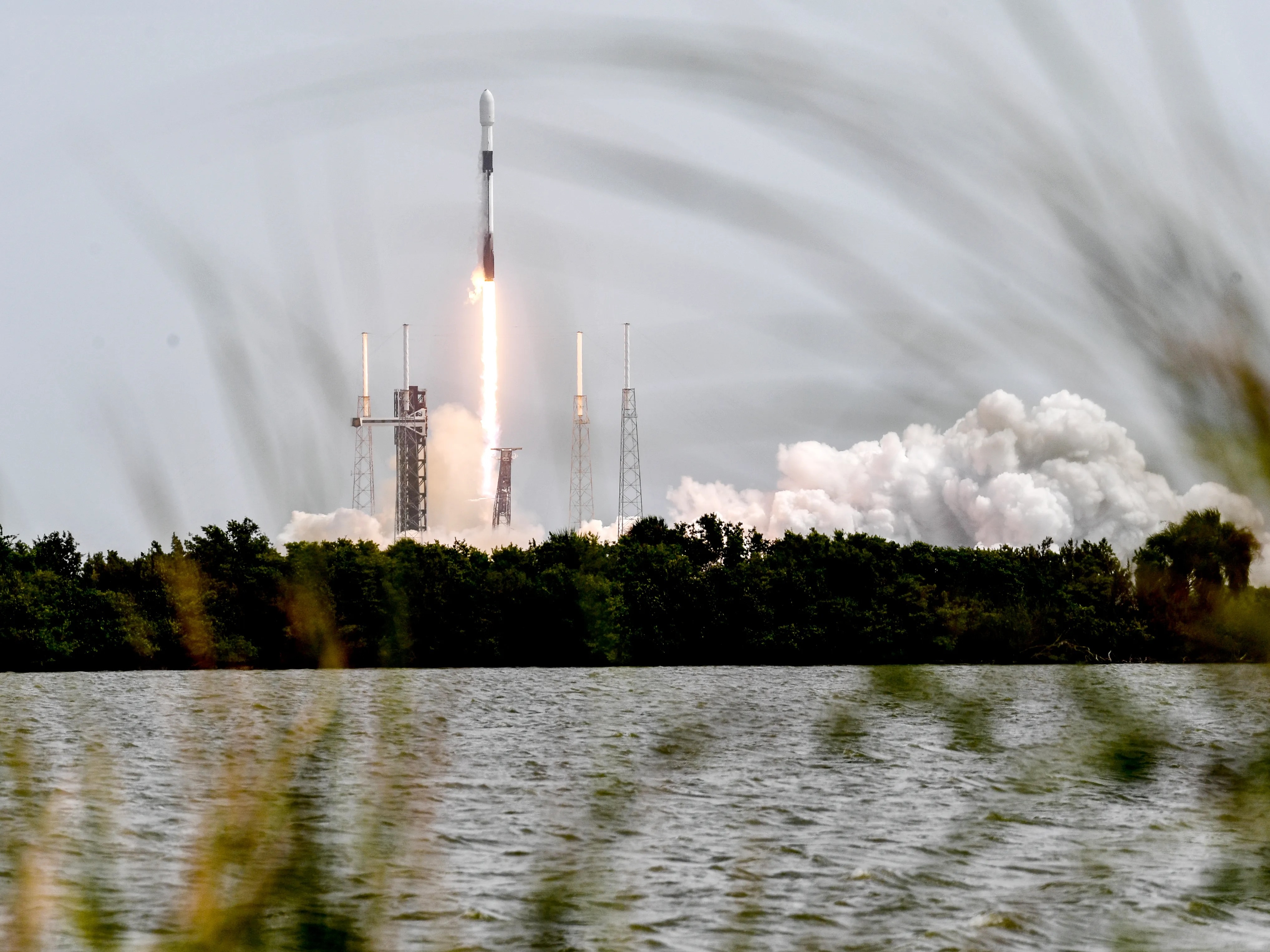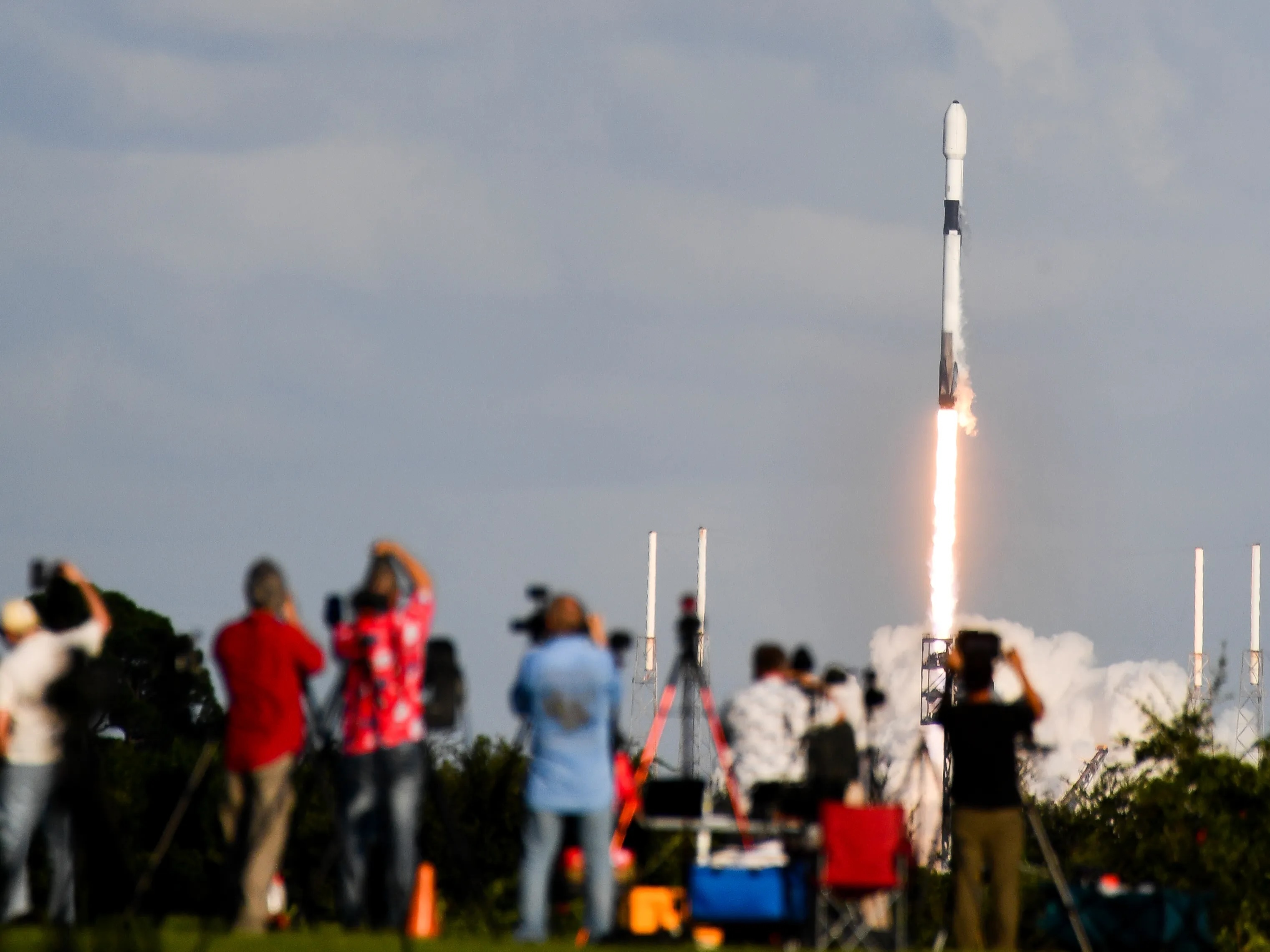13.09.2025
Northrop Grumman Cygnus resupply mission for NASA set to launch from Cape Canaveral

If weather cooperates, the Space Coast will cap the weekend with the latest resupply mission launched to the space station, along with a rattling sonic boom.
NASA’s Northrop Grumman Commercial Resupply Services 23 mission is set to lift off no earlier than 6:11 p.m. Sunday, Sept. 14 from Launch Complex 40 in Cape Canaveral Space Force Station.
The mission will carry supplies up to NASA's astronauts onboard the International Space Station packed in a Northrop Grumman Cygnus XL spacecraft. It will be launched atop a SpaceX Falcon 9 rocket.
Due to the Cygnus spacecraft heading for the space station, the launch must go right on time or SpaceX will have to stand down for the day.
The spacecraft will be delivering more than 11,000 pounds of food, supplies, and science to the astronauts onboard the station. Northrop Grumman CRS-23 will be the first flight of the company's new Cygnus XL spacecraft. It is referred to as a solar powered, larger and more capable cargo spacecraft compared to previous models of the Cygnus, which flew multiple NASA resupply missions in the past.
According to NASA, Northrop Grumman named the spacecraft the S.S. William “Willie” McCool, in memory of the pilot of the ill-fated STS-107 space shuttle Columbia accident in 2003. All seven astronauts lost their lives when the shuttle broke apart during reentry.
Space Coast be aware: this launch will bring a sonic boom. The Falcon 9 rocket's booster will land back at Cape Canaveral Landing Zone 2, and due to the close proximity, Brevard County will hear a thunderous sound shortly after the landing.
The Cygnus will arrive at the space station no earlier than Wednesday, Sept. 17. Unlike SpaceX's Dragon, which docks without assistance, astronauts onboard must use the Canadarm2 to grab hold of the spacecraft and manually dock it.
The science onboard includes investigations into semiconductor crystals for future space technologies, decreasing harmful bacteria, managing fuel pressure, and how microgravity may improve medication production.
Originally owned and operated by Orbital Sciences, Northrop Grumman purchased the rights to the Cygnus spacecraft in 2018.
Quelle: Florida Today
----
Update: 15.09.2025
.
SpaceX launches Northrop Grumman Cygnus spacecraft for NASA from Cape Canavera
It wasn't thunder heard Sunday evening across the Space Coast. It was a brand new Northrop Grumman spacecraft off on a delivery mission to the space station.
Launched atop a SpaceX Falcon 9 rocket at 6:11 p.m. Sept. 14, the Northrop Grumman Cygnus XL spacecraft headed to the International Space Station on a resupply mission for NASA. Liftoff of the NG-23 mission occurred from Launch Complex 40 in Cape Canaveral Space Force Station.
Just over eight minutes past the liftoff, a rattling sonic boom sounded throughout Brevard County as the Falcon 9’s booster returned to Cape Canaveral Landing Zone 2. This specific Falcon 9 saw its fourth landing.
It's been a busy time for the International Space Station. The mission comes a day after the Russian Progress 93 cargo mission docked to the space station on Saturday, Sept. 13. And just back on August 24, a SpaceX Dragon carried supplies to the space station from Cape Canaveral on the CRS-33 mission.
This Northrop Grumman Cygnus spacecraft is the company's latest version of its spacecraft, known as the Cygnus XL.
The new spacecraft is described as 1.6 meters longer and able to carry 2,600 additional pounds of cargo. It also features late-load capability, meaning sensitive cargo can be added last minute.
Unlike the SpaceX Dragon, Cygnus does not dock to the space station by itself. On Sept. 17, NASA astronauts Jonny Kim and Zena Cardman will use the robotic Canadarm to capture and dock the spacecraft.

The spacecraft will remain docked at the space station until Spring 2026. Like past Cygnus spacecrafts, it will be filled with trash from the station before being released to burn up in the atmosphere.
According to NASA, Northrop Grumman named the spacecraft the S.S. William “Willie” McCool, in memory of the pilot of the tragic space shuttle Columbia accident in 2003. All seven astronauts lost their lives when the shuttle broke apart during reentry.
NG-23 mission launches atop SpaceX rocket, carrying science to ISS
“The NG-23 spacecraft will be carrying hardware and samples to support over 50 different scientific studies and research facilities across NASA, the International Space Station National Laboratory, and our international partners,” said Liz Warren, associate chief scientist for NASA’s International Space Station program research office.
The first study mentioned investigates zero boil off tank non-condensables, which is a follow up to a previous experiment of the same matter. The goal is to find ways for long term storage of liquid xenon or neon – cryogenic fluids which need to be kept at very cold temperatures. This is important for long-term human space missions, as these cryogenic fluids provide not just fuel, but power life support. Data acquired from this test will be used to develop future cryogenic fluid storage.
“The current practice is to vent, boil off, vapor into space and use onboard propellants to cool lines and tank walls before transfer and filling operations. But these practices are not efficient for long durations and long mission – such as a journey to Mars,” said Warren.
Another experiment onboard will look into the efficiency of germicidal ultraviolet light to avoid the growth of microbes. Warren explained that this will not only help protect the health of astronauts but extend the life of equipment onboard. The goal is to provide a chemical-free disinfectant via UV light using flexible optical fibers.
Findings will be used to develop future air and water systems for space exploration and maybe even lead to spin-offs here on Earth.
Another follow up study investigates semiconductors in space. Warren explained that the microgravity environment allows for a better amount and quality of crystals, which will be used in next-generation semiconductor technologies.
These crystals will result in “radiation hardened, low power, and high-speed electronics and sensors,” said Warren. This might also lead to spin-off use on Earth in quantum computing, radiation detecting, electric vehicles, and medical tools.
Finally, a study will investigate whether the microgravity environment improves the structure of pharmaceutical drugs. Warren said findings could impact the development of drugs for cardiovascular, immunologic, cancer, and neurodegenerative diseases.
“Seed crystals” will be produced on the space station and then brought back to Earth for larger batch production.
Quelle: Florida Today
+++
NASA Science, Cargo Launches Aboard Northrop Grumman CRS-23
NASA is sending more science, technology demonstrations, and crew supplies to the International Space Station following the successful launch of the agency’s Northrop Grumman Commercial Resupply Services 23 mission, or Northrop Grumman CRS-23.
The company’s Cygnus XL spacecraft, carrying more than 11,000 pounds of cargo to the orbiting laboratory, lifted off at 6:11 p.m. EDT Sunday on a SpaceX Falcon 9 rocket from Space Launch Complex 40 at Cape Canaveral Space Force Station in Florida. This mission is the first flight of the larger, more cargo-capable version of the solar-powered spacecraft.
Cygnus XL is scheduled to be captured at 6:35 a.m. on Wednesday, Sept. 17, by the Canadarm2 robotic arm, which NASA astronaut Jonny Kim will operate with assistance from NASA astronaut Zena Cardman. Following capture, the spacecraft will be installed to the Unity module’s Earth-facing port for cargo unloading.
The resupply mission is carrying dozens of research experiments that will be conducted during Expedition 73, including materials to produce semiconductor crystals in space and equipment to develop improvements for cryogenic fuel tanks. The spacecraft also will deliver a specialized UV light system to prevent the growth of microbe communities that form in water systems and supplies to produce pharmaceutical crystals that could treat cancer and other diseases.
These are just a sample of the hundreds of scientific investigations conducted aboard the station in the areas of biology and biotechnology, Earth and space science, physical sciences, as well as technology development and demonstrations. For nearly 25 years, NASA has supported a continuous U.S. human presence aboard the orbiting laboratory, where astronauts have learned to live and work in space for extended periods of time. The space station is a springboard for developing a low Earth economy and NASA’s next great leaps in exploration, including Artemis missions to the Moon and American astronaut missions to Mars.
NASA’s arrival, capture, and installation coverage are as follows (all times Eastern and subject to change based on real-time operations):
Wednesday, Sept. 17
5 a.m. – Arrival coverage begins on NASA+, Amazon Prime, and more.
6:35 a.m. – Capture of Cygnus XL with the space station’s robotic arm.
8 a.m. – Installation coverage begins on NASA+, Amazon Prime, and more.
All coverage times are estimates and could be adjusted based on operations after launch. Follow the space station blog for the most up-to-date information.
Cygnus XL is scheduled to remain at the orbiting laboratory until March 2026, before it departs and disposes of several thousand pounds of trash through its re-entry into Earth’s atmosphere, where it will harmlessly burn up. The spacecraft is named the S.S. William “Willie” C. McCool, in honor of the NASA astronaut who perished in 2003 during the space shuttle Columbia accident.
Quelle: NASA
